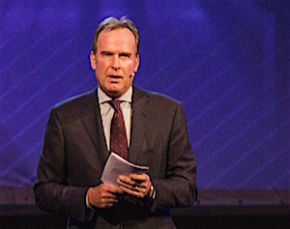
Still essentially a TAMP—a turnkey asset management platform—Envestnet has in the past few years grown through acquisition to become perhaps the largest single provider of cloud-based wealth management software to tens of thousands of advisors at independent, bank-owned and insurer-owned broker-dealers and registered investment advisors (RIAs).
By scooping up firms like Tamarac, Yodlee and others, the Chicago-based, publicly held (since 2010) firm has steadily increased the breadth and depth of its menu of technology solutions that enable broker-dealers and RIAs to outsource almost any of their middle- and back-office portfolio management, research, administrative or client relationship management chores.
Envestnet was, in a way, the first white-label robo-advisor for advisors. Its chairman, CEO and co-founder, Judson Bergman, saw earlier than most that a robo-human hybrid model is the most efficient way to offer fee-based, fiduciary, mass-customized financial advice in the advisor-mediated space. In that equation, his company delivers the automated, software-driven, algorithmic half and wealth managers provide the consultative, client-facing, rainmaking human side.
“What people don’t do well, computers excel at,” Bergman told RIJ recently. “What we’re good at, they’re lousy at. Experts plus machines are better than machines alone or experts alone. This principle inspires me.”
If you’re not familiar with Envestnet, that may be because it’s a behind-the-scenes technology provider like Intel, not a consumer brand. “Envestnet is the ‘Kasparov Inside.’ Or rather, we’re the technology inside the future Kasparovs of wealth advisory. We enable the experts,” Bergman said in the interview.
Alois Pirker, an analyst at Aite, has followed Envestnet for several years. “They’ve consolidated the TAMP market. There still are other TAMPs. But if you go back 10 years, there would have been a ton more TAMPs than today,” he told RIJ.
“There will always be firms that build in-house, like Merrill Lynch and the other wire houses, but that space has narrowed. Very few firms have that luxury to build within. Others have chosen to differentiate in the way they communicate rather than by maintaining their own platform.
“Envestnet had always been in the broker-dealer space,” Pirker continued. “That’s the core area for TAMPs. The acquisition of Tamarac put them in the RIA space. Their other category of acquisition is less about gaining market share in our core market and more about evolving into new areas. Their biggest acquisition so far has been Yodlee, which is heavily focused on the bank space and the data aggregation space.
“That’s expanded their turf quite a bit. Aggregation is a key capability because businesses want to provide holistic services. The digitization of the industry means that the client portal is front and center, and Yodlee already has a strong position on the client portal,” Pirker said.
Bergman, a former managing director at Nuveen Mutual Funds (who with Nuveen colleague Jim Lumberg founded Envestnet in 1999), grew up in the same Minneapolis suburb as Sen. Al Franken and New York Times columnist Tom Friedman, attended Wheaton College and earned his MBA at Columbia. In an interview at his office on E. Wacker Drive in Chicago (across the Chicago River from a tall silver skyscraper bearing the surname of the new president of the United States in giant letters), he spoke with RIJ about fintech, advisor fiduciary obligations and how the two fit together.
RIJ: Envestnet is now a serial acquirer of other companies, most notably of Yodlee for $590 million in 2015. What’s the motivation for these purchases?
Bergman: The motivation is a conviction that wealth management is rapidly changing from an investment-centric process to a financial-planning-and-wellness-centric process. That means advisors who intend to act as fiduciaries must deliver plans that demonstrate knowledge of the customer. That means more data. It means stronger capabilities in related areas, like tax planning.
We want to equip and enable the advisor of the future to become a symbiotic advisor, on the assumption that persons-plus-machines is better than either alone. The goal is to enable advisors to take advantage of the best technology, to depend on Envestnet to do the routine tasks that aren’t necessarily value-added—CRM; research, to a degree—and to give them automated know-your-customer capability around their clients’ liabilities, spending needs, goals and objectives for retirement and health care.
Our purpose is to enable advisors to go from being investment advisors to being wealth advisors, to being the expert in the middle of a complex technological and economic eco-system. That’s a tall order.
RIJ: Envestnet used to be one of many TAMPs. Why did it emerge from the pack? What made it different?
Bergman: We were the first web-based managed platform. We were in the cloud before it was called “the cloud.” At the beginning we did demonstrations of our technology. Prospects said, “Let me see how you do research, proposal, account rebalancing,” and we did demos. Then they said, “When can you install it?” We said, “What do you mean? We host it.”
RIJ: At the time, that must have required some explanation.
Bergman: I’ve been on the bleeding edge as much as I’ve been on the leading edge, and it’s not always a comfortable place to be.
At the time, firms still had firewalls around installed enterprise software. That was starting to break down by 2003, 2004 and 2005. So we were the first TAMP to unbundle asset management from technology and we were the first to have a tablet-enabled platform. That drove a lot of adoption.
As early as 2003, you could use us like a TAMP and get an outsourced chief technology officer, chief information officer and chief operations officer, or you can just get the technology, like billing or reconciliation. We blew up the TAMP business.
We recognized that there are different buyers. There are the high-end RIAs, who consider themselves to be the ‘chief executive officers’ and ‘chief investment officers’ of their firms. Bundling asset management makes no sense to them. They want enabling technology for CRM or billing or administration. Providing a full range of services is still a significant part of our revenue, but more of the revenue comes from à la carte offerings or bundled à la carte offerings. You can get the vegetables and the appetizer, and skip the aperitif or dessert.
RIJ: What does that mean for the individual advisor and his or her clients?
Bergman: Traditionally, a financial plan was built after weeks or months of gathering data—literally boxes of paper records, check stubs, check registers. The client gives that to the planner, and once the plan is done it has a shelf life of a few months or a year. The process is highly labor-intensive and very inefficient. You’ve got data aggregation and analytics plus net worth applications and budget applications that all feed into the financial planning activity, which drives the investment programs that serve the clients’ goals and fit their risk tolerance. Today, much of the work could be done through automation. And to do all that in real time…this is our vision of how advisors can add value in a fiduciary standard world.
RIJ: Did you predict that there would be a push for a fiduciary standard?
Bergman: I can’t claim that we saw the fiduciary rule coming. What we saw, from the founding of the company, was the trend to fee-based advice. It’s been 17 years since then, and there’s still more commission-based business than fee-based. But we got the trend right. If, when we started, someone with a crystal ball had told me that 17 years later there would still be more commission-based business than fee-based business, I would have said, ‘Maybe we shouldn’t do this.’ We saw it, but we were early. As for the outsourcing of advisor technology, anybody could see that. But we acted.
RIJ: When did you start positioning yourself as a provider of fiduciary compliance services?
Bergman: Originally, most of our enterprise clients had broker-dealer businesses, and followed a suitability standard. So they weren’t buying fiduciary support. Then, in 2014, advisors to 401(k) plans had to disclose if they were agents or fiduciaries; that was the first DOL ruling. That was a meaningful change, so we put together our retirement solutions business and launched that.
At the same time, we saw that the fiduciary standard, if it were adopted, would have broad implications for how the typical advisor ran his or her business. If you’re following a suitability standard, you don’t need to know as much about the client. The fiduciary standard means that people who are investment experts, who do just asset allocation and vehicle selection, in order to succeed in a fiduciary world, will have to be able to plan, coach and be aware of tax and estate issues.
We saw that the path forward was to empower advisors with sophisticated enabling technology that spanned the fiduciary services continuum—data aggregation, financial planning, analytics, portfolio management tools, on-boarding tools, product access, billing, performance reporting—and tied it all back to the objectives of the financial plan. In a DOL world, it’s the only way to turbo-charge advisor productivity. It’s a warp speed accelerator of client on-boarding, and a quantum enhancement of the advisor’s ability to understand the client.
RIJ: Where did the Yodlee acquisition fit into the picture?
Bergman: When we bought Yodlee, people said, ‘What’s so wrong about your business that you had to buy them?’ We said, ‘You’ll see how it makes sense when the fiduciary standard is adopted.’ Now people say it wasn’t so stupid. Data aggregation turbo-charges on-boarding and productivity. Data portability is part of client freedom. If you can do it in a secure and trusted way, it can create many benefits.
RIJ: What are some of those benefits?
Bergman: For instance, we can forecast when clients will have an overdraft or when they will have the ability to save more. In the hands of a trusted advisor, this creates opportunity for better outcomes—better returns, better outcomes for retirement. One result of it is higher share of wallet, but advisors get that on the backswing. Capturing a bigger wallet share is a result of, but not the purpose of, data aggregation. The purpose is that it gives the trusted advisor and the investor a real time picture of the client’s finances. How else do you demonstrate that you understand the client, except by looking at not just assets but also liabilities and spending?
RIJ: The passage of the fiduciary rule last year wasn’t exactly welcome news for your broker-dealer clients, though.
Bergman: When the DOL rule was first announced, our clients were evidencing the stages of the Kubler-Ross syndrome: Denial, grief, anger, etc. The attitude is coalescing toward acceptance. Some companies are focusing on basic risk-mitigation. Others are making fundamental changes to their business models. Those who have been fiduciaries all along, are asking, ‘What does this mean to me in terms of on-boarding, documentation, oversight, or fulfillment? If I’m a fiduciary, how do I document that?’ And the responses vary, depending on whether you’re an RIA or a trust officer or an insurance agent or a broker-dealer rep.
RIJ: Now, with the results of the presidential election, the fiduciary rule is in jeopardy. How are you and your clients reacting?
Bergman: A typical response has been, ‘We have to be ready but if something changes we won’t proceed as quickly.’ The election doesn’t change our strategy, which is fiduciary support. Whether the DOL rule is enacted or delayed, most of our client base has concluded that using a fiduciary standard is a better business model. There’s been a range of responses from our clients. Banks and insurance companies have had a longer lead-time and they’re a little more risk mitigation-oriented. They’ve concluded that it’s too risky to wait and see. At this point [mid-January], they’re assuming that it goes into effect in April.
Without a crystal ball on political stuff, it makes more sense to ask: Which firms and advisors will make it a priority to work by a fiduciary standard? Our major enterprise clients are building some flexibility into their rolling out processes. They want to be prepared to go, but they’re also prepared to slow it down if that’s what happens.
RIJ: Shifting gears a bit: As automation and outsourcing to a firm like Envestnet allows advisors to serve more clients, do you think advisory firms will employ fewer advisors?
Bergman: Over 100% of the growth in the RIA business is accruing to advisors with over $500 million under management. Those with less are losing share. That’s a fact. Yes, there will be fewer advisors and the most successful will have characteristics that are benchmarkable. Certain practice patterns are emerging. Those that grow will make effective use of integrated wealth management technology. The facts bear those trends out over the last five or six years.
RIJ: Broker-dealers and RIAs are known for specializing in wealth accumulation rather than decumulation. Do you see that situation changing?
Bergman: Of the firms that have chosen to leverage our product and technology, some have focused on retirement income, but it’s not a majority. We serve over 50,000 advisors at over a thousand organizations. Some organizations are huge. Some are sole practitioners. Most of them haven’t had retirement income as their primary focus. That may not change dramatically, but more and more of them will see retirement income as an important dimension of their practice.
RIJ: Envestnet’s share price has seen some volatility over the past couple of years. What underlying story does that tell?
Bergman: In late 2014, despite what anyone tried to do to stop it, there were momentum investors that came into our stock because our top-line and cash flow numbers were growing at an accelerating rate. When that happens to a small-cap company, you get investors without a solid understanding of the fundamentals. We tried to make it clear that our acceleration was in part because of the strong market—that it couldn’t continue. And it didn’t. The market was flat for much of the next year. As revenue and growth slowed, there was a change in the market’s perception of the company. I don’t know many entrepreneur-founders who think their stock is overvalued, but we’ve been overvalued and we’ve been undervalued. Since we’ve gone public, our revenue has increased eight- or nine-fold. Cash flow has risen by a similar amount. That’s a strong indication that clients want our services and technology.
RIJ: In manufacturing, they’ve talked about ‘mass customization.’ Do you think that information technology is going to be able to deliver mass customization in the world of investment advice?
Bergman: Individuals increasingly want solutions—portfolio or retirement solutions—that are personalized. The successful organizations in this space will be able to offer personalized financial plans that go beyond considerations of age, beyond risk-tolerance questionnaires, and beyond projections of net worth at retirement. Plans will include behavioral aspects and considerations that go far beyond traditional risk analysis. Advisors will be able use smart, learning-adaptive algorithms to provide more personalized investment solutions for clients.
RIJ: Even for mass-market clients?
Bergman: As they perfect the technology, they’ll be able to do that for individuals of lower net worth than they can now. It’s difficult today for investors with less than $500,000 to $1 million to get that level of personalization. I expect that technology, with an expert in the middle, will be able to lower those wealth thresholds to maybe $100,000 or lower. You’ll see personalized plans for not just the mass affluent, but also for the mass market. That’s how we think about the future. It’s all pointing toward greater personalization at lower levels of net worth.
© 2017 RIJ Publishing LLC. All rights reserved.





 “We need to know when to get in and when to get out,” said Maggi, voicing the concern of a publicly-employed pension fund manager who will likely face heavy criticism from his risk-averse clients for choosing any investment that fails, even over the short term. Consequently, the OPCs tend to invest most of their contributions in Costa Rican bonds.
“We need to know when to get in and when to get out,” said Maggi, voicing the concern of a publicly-employed pension fund manager who will likely face heavy criticism from his risk-averse clients for choosing any investment that fails, even over the short term. Consequently, the OPCs tend to invest most of their contributions in Costa Rican bonds.
